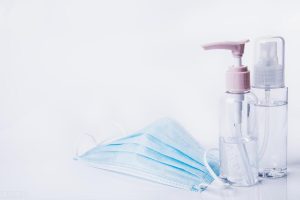In the field of healthcare, ensuring a safe and infection-free environment is of paramount importance. Two essential processes for achieving this are disinfection and sterilization.
What Sets Disinfection and Sterilization Apart?
Disinfection
Disinfection is the process of eliminating or reducing the number of microorganisms on inanimate surfaces to a level that is considered safe for public health. This method targets a wide range of pathogens, such as bacteria, viruses, and fungi, but it may not necessarily eliminate all types of microbial life, including bacterial spores. Disinfectants are typically chemical agents, such as alcohol, chlorine compounds, or hydrogen peroxide.
Sterilization
Sterilization, on the other hand, is a more rigorous process that aims to completely eradicate all forms of microbial life, including bacterial spores, from both living and inanimate surfaces. This method is essential for critical medical equipment, surgical instruments, and materials used in invasive procedures. Sterilization can be achieved through various means, including heat, radiation, and chemical sterilants.
Practical Applications
Disinfection
Disinfection is commonly used in everyday scenarios to maintain a hygienic environment and prevent the spread of infectious diseases. Some practical applications of disinfection include:
-
- Hospitals and Clinics: Regular disinfection of surfaces, medical equipment, and patient care areas to prevent healthcare-associated infections (HAIs).
- Public Spaces: Disinfection of public transport, schools, gyms, and other communal areas to reduce the risk of disease transmission.
- Food Industry: Disinfection of food processing equipment and food contact surfaces to ensure food safety.

Sterilization
Sterilization is crucial in situations where absolute elimination of all microorganisms is required to prevent infections and ensure safety. Some practical applications of sterilization include:
-
- Surgical Procedures: Sterilization of surgical instruments and equipment to minimize the risk of surgical site infections.
- Pharmaceutical Industry: Sterilization of drug containers and packaging to maintain the integrity and safety of pharmaceutical products.
- Biomedical Research: Sterilization of laboratory equipment and tools to avoid cross-contamination and maintain the integrity of experiments.

Conclusion
Both disinfection and sterilization play vital roles in maintaining a clean and safe environment in various settings, including healthcare facilities, public spaces, and industrial sectors. Understanding the differences between these two methods is crucial for implementing appropriate infection control measures. While disinfection is effective for routine sanitization, sterilization is essential for critical medical and laboratory procedures. By adopting the right combination of disinfection and sterilization practices, we can safeguard public health and prevent the spread of infectious diseases.